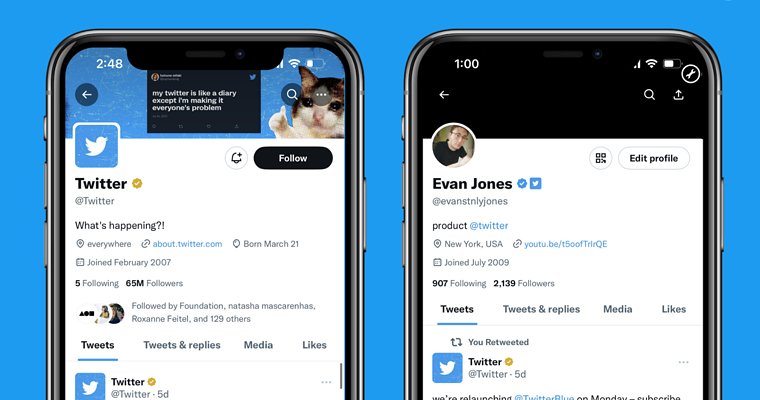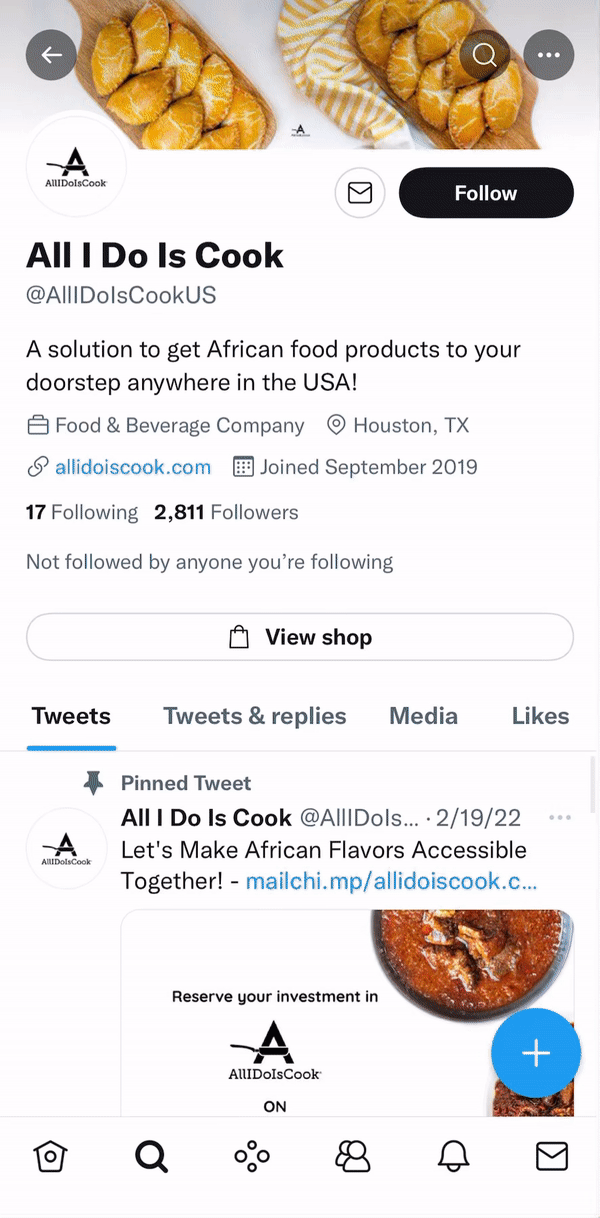After a somewhat chaotic rollout for Twitter Blue Verified for standard users, the company is beginning the process of launching Blue for Business.
The new subscription option will distinguish verified businesses from verified individuals through a unique gold checkmark, square profile pictures, and the ability to link affiliated Twitter accounts.
Those who are linked as an affiliated account, such as accounts of employees, will be given a different badge next to their verified individual checkmark.
For example, you can see the difference between the official Twitter account and the linked affiliated account for an employee below:

It is unclear what other benefits Blue for Business accounts receive by subscribing – other than the ability to distinguish themselves from potential impersonators.
However, the announcement does describe some ways Twitter sees Blue for Business being used by brands:
“By creating this connection, we’re making it possible for businesses to create networks within their own organizations–on Twitter. Businesses can affiliate their leadership, brands, support handles, employees or teams. Journalists, sports team players or movie characters can all be affiliated. You name it, we got it. Each affiliate will be verified and officially linked to their parent handle based on a list provided by the parent business. We will share any new criteria, pricing or process as we update them.”
Currently, Blue for Business is limited to a pilot run of select accounts. It is expected to roll out broadly to brands that want to subscribe early next year. Most likely, we will learn more about exactly what the service has to offer brands other than verification.




